 Roland HP704 & HP702 Digital Pianos | UPDATED REVIEW & Comparison | June 1, 2024 | The Roland Music Instrument Company headquartered in Japan is well known throughout the world for producing high quality professional and home music products including guitar electronics, digital drums, digital accordions, pro keyboards, home digital pianos, audio gear, sound effects processors, digital recording gear, and so much more. I have been using Roland music products for most of my long music career and I have liked them very much in the past. However, even though there are some things I like about these two models, there are also some things I don’t like, especially for their higher prices.
Roland HP704 & HP702 Digital Pianos | UPDATED REVIEW & Comparison | June 1, 2024 | The Roland Music Instrument Company headquartered in Japan is well known throughout the world for producing high quality professional and home music products including guitar electronics, digital drums, digital accordions, pro keyboards, home digital pianos, audio gear, sound effects processors, digital recording gear, and so much more. I have been using Roland music products for most of my long music career and I have liked them very much in the past. However, even though there are some things I like about these two models, there are also some things I don’t like, especially for their higher prices.
 The HP704 and HP702 pick up where Roland left off on their previous series. These replacement models offer some good features and both the HP702 & HP704 have the exact same digital features and piano sound chip with the exception of the HP702 having the Standard PHA4 all-plastic key action vs the HP704 having the upgraded PHA50 “hybrid” key action. The HP704 has wooden key sides and plastic key interior, and a better balanced movement. The HP702 has a basic internal speaker system with 2 smaller speakers and 28 watts of audio going through 2 amplifiers vs 60 watt total internal power in the HP704 going through 4 speakers and 4 amplifiers.
The HP704 and HP702 pick up where Roland left off on their previous series. These replacement models offer some good features and both the HP702 & HP704 have the exact same digital features and piano sound chip with the exception of the HP702 having the Standard PHA4 all-plastic key action vs the HP704 having the upgraded PHA50 “hybrid” key action. The HP704 has wooden key sides and plastic key interior, and a better balanced movement. The HP702 has a basic internal speaker system with 2 smaller speakers and 28 watts of audio going through 2 amplifiers vs 60 watt total internal power in the HP704 going through 4 speakers and 4 amplifiers.  So the HP704 sounds noticeably better, fuller, and more resonant compared to the HP702, but I expected that. It should sound better since it’s $900 more than the HP702. In my opinion, even though the HP702 does produce a good amount of volume when the master volume control is turned all the way up, the fullness and bass frequencies are just not there as much as the HP704.
So the HP704 sounds noticeably better, fuller, and more resonant compared to the HP702, but I expected that. It should sound better since it’s $900 more than the HP702. In my opinion, even though the HP702 does produce a good amount of volume when the master volume control is turned all the way up, the fullness and bass frequencies are just not there as much as the HP704.
It’s not until you jump up to the HP704 at $2899 discount price do you get the better and bigger internal sound system. But for many people, depending on the size of your room and your sound expectations, the HP702 may be sufficient in terms of volume. But there are other brands and models for $1999 that do a much better job in terms of the piano sound realism and speaker system such as the Korg G1 Air or the Casio AP-S450.
The 4 major things that I recommend to people to look for in a new digital piano is (in this order) key action authenticity, piano sound realism, pedaling response, and internal speaker system. The key action is always the #1 thing that piano teachers and pro piano players care about in any piano and it is not different for a digital piano. As I already mentioned, the Roland HP702 has the entry level PHA4 Standard key action. The overall response on this key action is actually pretty good although the touch weight of the keys is a bit firm/heavy compared to others, but still good. However, the key action can be somewhat noisy when playing the keys more aggressively when then keys strike bottom of key travel and it sound sometimes like the keys are hitting wood with not much dampening material underneath the keys. But when you play the key action normally and medium to soft levels of key attack then this noise issue is not a problem.

 The Standard PHA4 key action is also found in the low priced portable Roland FP-30X digital piano selling for $749 internet price whereas the next key action model up called the PHA50 “hybrid” action is in the the higher priced HP704 and in other Roland models above that one as well.So to get the more advanced key action you’ll need to be near the $3000 range whereas with Kawai digital pianos you can get a more advanced “hybrid” wood key action for around $3000. The Roland PHA50 key action uses thin wooden sides on the white keys while the larger portion inside the key is plastic.
The Standard PHA4 key action is also found in the low priced portable Roland FP-30X digital piano selling for $749 internet price whereas the next key action model up called the PHA50 “hybrid” action is in the the higher priced HP704 and in other Roland models above that one as well.So to get the more advanced key action you’ll need to be near the $3000 range whereas with Kawai digital pianos you can get a more advanced “hybrid” wood key action for around $3000. The Roland PHA50 key action uses thin wooden sides on the white keys while the larger portion inside the key is plastic.
 This combination of materials is supposed to provide a more stable key movement along with special stabilizer pins that make the key movement more secure. The weight of the keys are also more balanced and move a bit more quickly than the Standard key action. The PHA50 key action is also very quiet, especially as compared to the PHA4 Standard key action in the HP702.
This combination of materials is supposed to provide a more stable key movement along with special stabilizer pins that make the key movement more secure. The weight of the keys are also more balanced and move a bit more quickly than the Standard key action. The PHA50 key action is also very quiet, especially as compared to the PHA4 Standard key action in the HP702.
 A grand piano would have longer keys (as I just mentioned) so there would be a better movement and balance from the back of the key to the front and from one key to the next. Roland does have an upgraded key action called the “Hybrid Grand” that gets closer to a real grand piano in the way the keys move, but it’s still not there yet. But that key action is better and moves more naturally than the PHA50 key action and it (the Hybrid Grand) is found in the higher priced models LX706/LX6 and LX708/LX9 which I discuss in another review. If you are a beginning or intermediate student then the HP702 may be more than sufficient as a digital piano. But if you have the extra disposable income then I would recommend the HP704 be worth your consideration not only because of the better key action, but also because the HP704 has a better sounding internal speaker system, and it looks more upgraded as well.
A grand piano would have longer keys (as I just mentioned) so there would be a better movement and balance from the back of the key to the front and from one key to the next. Roland does have an upgraded key action called the “Hybrid Grand” that gets closer to a real grand piano in the way the keys move, but it’s still not there yet. But that key action is better and moves more naturally than the PHA50 key action and it (the Hybrid Grand) is found in the higher priced models LX706/LX6 and LX708/LX9 which I discuss in another review. If you are a beginning or intermediate student then the HP702 may be more than sufficient as a digital piano. But if you have the extra disposable income then I would recommend the HP704 be worth your consideration not only because of the better key action, but also because the HP704 has a better sounding internal speaker system, and it looks more upgraded as well.The key tops of the piano keys are in these models are made out of a proprietary material which simulates the look and feel of the old acoustic piano keys which were made from organic material of real ebony and ivory so you get an upgraded “fingering/playing experience” because of these synthetic materials being applied to the tops of the keys which helps absorb sweat from the fingers and also makes the keys look a bit classier in my opinion.
 One important thing I want to point out when it comes to key actions is, when shopping for a digital piano always keep in mind that the #1 component of any piano is definitely the “key action” in the way the keys move up and down, the down-weight and upweight force of the keys, and also the length of the keys. You want the key to be as long as possible so you have the best front to back and side to side balanced movement as possible and you also want the “touch weight” of the key (the amount of force it takes to begin to press down the key) to be as close to 55 grams as possible. The Roland HP pianos have a touch down-weight measurement of about 63 grams (HP704) which is pretty good.
One important thing I want to point out when it comes to key actions is, when shopping for a digital piano always keep in mind that the #1 component of any piano is definitely the “key action” in the way the keys move up and down, the down-weight and upweight force of the keys, and also the length of the keys. You want the key to be as long as possible so you have the best front to back and side to side balanced movement as possible and you also want the “touch weight” of the key (the amount of force it takes to begin to press down the key) to be as close to 55 grams as possible. The Roland HP pianos have a touch down-weight measurement of about 63 grams (HP704) which is pretty good.
That means the Kawai key action moves easier, quicker, the key is longer, and the key movement is more like that of a grand piano.Even the up-weight force is noticeably more realistic on the Kawai models coming in at approx 33 grams as opposed to a heavier and more forceful (approx) 46 grams of upward pressure on the Roland pianos. 12″ long which is over 3″ longer than the Roland keys which gives those Kawai white keys an even better balance and feel from front to back of the key than the Roland keys. The touch down-weight force required for playing the Kawai wood key action is approx 54 grams which is much closer to the standard acoustic grand piano measurement of 55 grams (measured on middle C with damper pedal down).
 The acoustic piano sound that is simulated in these models comes from a technology called Physical Modeling. Unlike other digital piano companies who use the Sampling (recording) technology or a combination of Physical Modeling & Sampling to get and make the piano sound, Roland generates the sound from mathematical algorithms in “virtual reality” using computer generated piano sounds that did not actually get recorded from a real piano using microphones (sampling). The upside of virtual reality physical modeling technology is theoretically you can create a more realistic piano sound because you don’t have the limitations of microphones, recording equipment, and processing of those original piano samples (recordings).
The acoustic piano sound that is simulated in these models comes from a technology called Physical Modeling. Unlike other digital piano companies who use the Sampling (recording) technology or a combination of Physical Modeling & Sampling to get and make the piano sound, Roland generates the sound from mathematical algorithms in “virtual reality” using computer generated piano sounds that did not actually get recorded from a real piano using microphones (sampling). The upside of virtual reality physical modeling technology is theoretically you can create a more realistic piano sound because you don’t have the limitations of microphones, recording equipment, and processing of those original piano samples (recordings). But the downside of Physical Modeling is the fact that the piano sound is done “virtually” and so the limitation there is that is does not start out with the actual recorded piano sound. Therefore the physical modeled sound can have an artificial tone to it sometimes depending on the notes or chords you play, how you are playing the song, and the amount and duration of the pedal sustain you are using.
But the downside of Physical Modeling is the fact that the piano sound is done “virtually” and so the limitation there is that is does not start out with the actual recorded piano sound. Therefore the physical modeled sound can have an artificial tone to it sometimes depending on the notes or chords you play, how you are playing the song, and the amount and duration of the pedal sustain you are using.
 In other words, if you know what a real piano actually sounds like then you may find that the Roland Physical modeling piano sound engine in the HP702 and HP704 can be a bit artificial at times, at least that is what I have found when playing these 2 models.The piano sound dynamic tonal range is very good offering a large range of dynamic tone from very mellow to very bright when you are playing the keys softly or with more force gradually playing with more or less velocity depending on which of the 4 piano sounds you select. So when it comes to the piano sound engine, the HP702 and HP704 are identical in getting the piano sound. The more powerful internal speaker system in the HP704 projects that piano sound in a noticeably bigger way and is much satisfying.
In other words, if you know what a real piano actually sounds like then you may find that the Roland Physical modeling piano sound engine in the HP702 and HP704 can be a bit artificial at times, at least that is what I have found when playing these 2 models.The piano sound dynamic tonal range is very good offering a large range of dynamic tone from very mellow to very bright when you are playing the keys softly or with more force gradually playing with more or less velocity depending on which of the 4 piano sounds you select. So when it comes to the piano sound engine, the HP702 and HP704 are identical in getting the piano sound. The more powerful internal speaker system in the HP704 projects that piano sound in a noticeably bigger way and is much satisfying.But for me, a real “longer” recorded piano sample from a real Steinway, Yamaha, Kawai, Bosendorfer or other top name concert grand (which some people may call “old school” technology) is still a great way to reproduce a real acoustic piano sound using high quality microphones in a professional recording studio environment. However, if the digital piano manufacturer can “add” virtual physical modeling technology to the original sample (which a couple of digital piano companies are now doing) then that is best of both worlds because it gives you the benefits of both technologies and it reduces the chances of the reproduced piano being artificial and sounding fake.
 I am a big fan of Roland music products and have used them professionally and in my home studio for many years. When I see and hear stuff that is a problem for me in certain digital pianos then it disappoints me when a good manufacturer did not do a better job given their abilities in the electronic music products world with regard to basic functionality. Another continued issue for me with the physical modeling technology that Roland uses in these pianos (and was also an issue in the previous models) is the fact that when you change from one piano sound setting to another, whether that is a single piano tone or mixed with another instrument sound…the sound immediately drops out and disappears when you make that change while playing a song live.
I am a big fan of Roland music products and have used them professionally and in my home studio for many years. When I see and hear stuff that is a problem for me in certain digital pianos then it disappoints me when a good manufacturer did not do a better job given their abilities in the electronic music products world with regard to basic functionality. Another continued issue for me with the physical modeling technology that Roland uses in these pianos (and was also an issue in the previous models) is the fact that when you change from one piano sound setting to another, whether that is a single piano tone or mixed with another instrument sound…the sound immediately drops out and disappears when you make that change while playing a song live. 
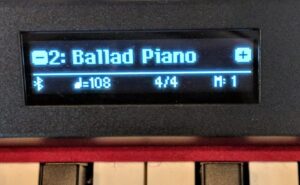 If you want to do a new piano sound setting or different instrument sound in a different part of the song, when you change from one sound to next when pressing the sound buttons, the entire series of notes that you have just played and are sustaining will immediately cut out and stop playing. This is true wherever you happen to be in the song. In other words, there is no smooth sound transitioning when playing notes and changing sounds…your music just stops playing until you replay the notes again. The technical term for this issue is called “all notes off.”
If you want to do a new piano sound setting or different instrument sound in a different part of the song, when you change from one sound to next when pressing the sound buttons, the entire series of notes that you have just played and are sustaining will immediately cut out and stop playing. This is true wherever you happen to be in the song. In other words, there is no smooth sound transitioning when playing notes and changing sounds…your music just stops playing until you replay the notes again. The technical term for this issue is called “all notes off.”
 This inability to transition from one piano sound to the next does not happen in most of the other major brands including Kawai, Yamaha, Korg, Casio, Dexibell, and others. A couple of those brands also use physical modeling technology although it is slightly different in the other brands. In prior models before Physical Modeling technology, Roland never had this lack of “smooth transition” from one sound to the next. This “all notes off” issue is particularly frustrating if you are playing in a performance at an event or even just at home, church, school, and you want to change those sounds at different times in different parts of your song.
This inability to transition from one piano sound to the next does not happen in most of the other major brands including Kawai, Yamaha, Korg, Casio, Dexibell, and others. A couple of those brands also use physical modeling technology although it is slightly different in the other brands. In prior models before Physical Modeling technology, Roland never had this lack of “smooth transition” from one sound to the next. This “all notes off” issue is particularly frustrating if you are playing in a performance at an event or even just at home, church, school, and you want to change those sounds at different times in different parts of your song. 
 There is a digital piano industry specification called “polyphony” and shoppers ask me about that all the time because most people do not understand it. “Polyphony” (pronounced po-li-fony) has to do with how much power the piano chip has in producing enough notes simultaneously when you are playing the digital piano live or when playing back a recorded song.Polyphony is all about “piano memory chip power and if you play at an advanced level and use lots of fingers and play lots of notes and also use a lot of sustain pedal, will the piano play reproduce all those notes seamlessly and effectively and sound natural without “note dropout” which means that the notes will not drop out and stop playing because you run out of polyphony memory.
There is a digital piano industry specification called “polyphony” and shoppers ask me about that all the time because most people do not understand it. “Polyphony” (pronounced po-li-fony) has to do with how much power the piano chip has in producing enough notes simultaneously when you are playing the digital piano live or when playing back a recorded song.Polyphony is all about “piano memory chip power and if you play at an advanced level and use lots of fingers and play lots of notes and also use a lot of sustain pedal, will the piano play reproduce all those notes seamlessly and effectively and sound natural without “note dropout” which means that the notes will not drop out and stop playing because you run out of polyphony memory. 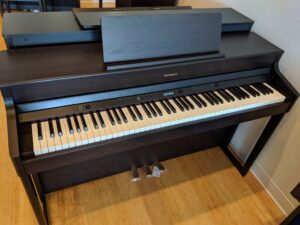 Years ago when the piano recorded samples in digital pianos were low quality, low polyphony memory piano sounds, the notes being heard when playing a song would spontaneously stop playing and just drop out as you were playing a song. It was very annoying, especially if you were an intermediate to advanced player. For a beginner there would seldom be a note drop-out issue with polyphony even when polyphony was only 24 or 32-note maximum.
Years ago when the piano recorded samples in digital pianos were low quality, low polyphony memory piano sounds, the notes being heard when playing a song would spontaneously stop playing and just drop out as you were playing a song. It was very annoying, especially if you were an intermediate to advanced player. For a beginner there would seldom be a note drop-out issue with polyphony even when polyphony was only 24 or 32-note maximum.But in today’s digital piano world with the advent of much more powerful piano sound chips, now there is 192-note, 256-note, 384-note, and unlimited polyphony. That means the pianos sound are noticeably more authentic than years ago and there will likely be no note drop-out no matter how advanced of a pianist you might be.
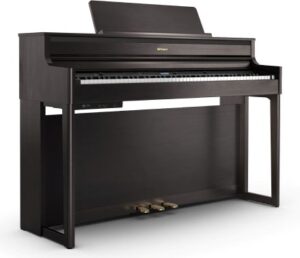 The Roland HP702 and HP704 have 2 polyphony ratings…one for the piano sound and another rating for all the instrument sounds.Since the HP models have the Physical Modeling technology then that technology offers unlimited polyphony power for the 4 acoustic piano sounds in these 2 models. For all of the other sounds that are non-piano sounds (harpsichord, electric piano, trumpet, strings, guitar, etc) the polyphony rating is 384-note polyphony (maximum mono rating) which is how many notes can be heard simultaneously when playing the piano using one of those sounds.
The Roland HP702 and HP704 have 2 polyphony ratings…one for the piano sound and another rating for all the instrument sounds.Since the HP models have the Physical Modeling technology then that technology offers unlimited polyphony power for the 4 acoustic piano sounds in these 2 models. For all of the other sounds that are non-piano sounds (harpsichord, electric piano, trumpet, strings, guitar, etc) the polyphony rating is 384-note polyphony (maximum mono rating) which is how many notes can be heard simultaneously when playing the piano using one of those sounds.
Since some of the instrument sounds are in stereo then you would divide the 384-note polyphony by 2 which would give you 192-note stereo polyphony which is way more than enough given that a piano only has 88 notes (keys). If you layer 2 sounds together then you divide that polyphony rating by 2 again because you have added a 2nd sound to you playing. You just do the math and then you know what you have. The bottom line is that you’ll never run out of polyphony note power in any of these Roland digital pianos.
 I do like the pedaling response on both models and all 3 pedals work like a regular acoustic piano with the right sustain pedal, center sostenuto pedal, and left soft pedal. So those pedals do function correctly and the amount and length of the sustain is very long and quite good. However, I did notice from time to time that depending on the notes and chords being played, the sustain made the piano tone sound very saturated and overwhelming. This type of pedaling sustain experience can happen on regular acoustic pianos if holding the sustain pedal down too long…I am not talking about that. I am talking when just using the pedal normally that the sustained tone sounds a bit artificial from time to time, like there is too much sustain. This is somewhat of a random occurrence and you probably will not notice it if you don’t play piano well or have a lot of experience playing real acoustic pianos like I do.
I do like the pedaling response on both models and all 3 pedals work like a regular acoustic piano with the right sustain pedal, center sostenuto pedal, and left soft pedal. So those pedals do function correctly and the amount and length of the sustain is very long and quite good. However, I did notice from time to time that depending on the notes and chords being played, the sustain made the piano tone sound very saturated and overwhelming. This type of pedaling sustain experience can happen on regular acoustic pianos if holding the sustain pedal down too long…I am not talking about that. I am talking when just using the pedal normally that the sustained tone sounds a bit artificial from time to time, like there is too much sustain. This is somewhat of a random occurrence and you probably will not notice it if you don’t play piano well or have a lot of experience playing real acoustic pianos like I do.But apart from that occasional artificial sustained piano sound experience, the tone is very good, the pedals work right, the pedals offer half-damper/continuous sustain so that you get different levels (length of time) for sustain and the sustain time is very long like a real piano. The left soft pedal works well and the middle pedal (sostenuto) is something that most people don’t use or will not use because that pedal is typically used by very advanced players for only specific kinds of music.
 sounds and the way they come out. In a real piano there is an actual large wood soundboard located inside of an acoustic grand piano and on the inside back of an upright acoustic piano. There are 5 different “virtual soundboards” available on all Roland piano models trying to emulate the sound coming out of real wood piano
sounds and the way they come out. In a real piano there is an actual large wood soundboard located inside of an acoustic grand piano and on the inside back of an upright acoustic piano. There are 5 different “virtual soundboards” available on all Roland piano models trying to emulate the sound coming out of real wood piano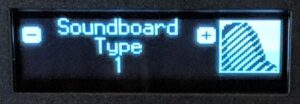 soundboard sand using that specific editing function can make the Roland pianos sound better or even worse depending on which one you choose.
soundboard sand using that specific editing function can make the Roland pianos sound better or even worse depending on which one you choose.
 The Roland HP702 and HP704 both have a huge library of instrument sounds which not only includes those 4 acoustic piano tones, but also includes 320 sampled instrument sounds such as flutes, violins, organs, brass, woodwinds, reeds, percussion, synthesizer tones, guitars, etc. So there is definitely a huge library of instrument sounds at your disposal and those sounds are sampled and not using the physical modeling technology. Some of the instrument sounds are actually pretty realistic while others sound more like toys or cheaper keyboards. Nevertheless, it nice to have a big library of them because most digital pianos in this price range have a sound library of less than 50 total instrument sounds. The instrument sounds can be found in the tone group buttons in the piano control panel.
The Roland HP702 and HP704 both have a huge library of instrument sounds which not only includes those 4 acoustic piano tones, but also includes 320 sampled instrument sounds such as flutes, violins, organs, brass, woodwinds, reeds, percussion, synthesizer tones, guitars, etc. So there is definitely a huge library of instrument sounds at your disposal and those sounds are sampled and not using the physical modeling technology. Some of the instrument sounds are actually pretty realistic while others sound more like toys or cheaper keyboards. Nevertheless, it nice to have a big library of them because most digital pianos in this price range have a sound library of less than 50 total instrument sounds. The instrument sounds can be found in the tone group buttons in the piano control panel.
 Those buttons are large and round flushmounted into the control panel and also light up to show you which tone group you are using.Once you select your tone group from the 4 tone group buttons, then you can cycle through the instruments in those buttons to select the specific instrument you would like to hear when you play the keys. Roland has done a really good job here in making the user experience easy and intuitive in selecting the instrument sounds that you want.
Those buttons are large and round flushmounted into the control panel and also light up to show you which tone group you are using.Once you select your tone group from the 4 tone group buttons, then you can cycle through the instruments in those buttons to select the specific instrument you would like to hear when you play the keys. Roland has done a really good job here in making the user experience easy and intuitive in selecting the instrument sounds that you want.
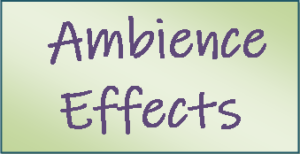 The Ambience effects section adds a type of echo to the piano sound by simulating the natural echo effects you would hear in various types of rooms and/or buildings, venues if a piano was played in that environment. On the HP702 & HP704 it is fairly easy to use and adjust the special ambience reverb effects using the Piano Designer function, then going to the ambience feature which then allows you adjust the amount (depth) of that effect that you would be applying to the instrument/pianos sounds.
The Ambience effects section adds a type of echo to the piano sound by simulating the natural echo effects you would hear in various types of rooms and/or buildings, venues if a piano was played in that environment. On the HP702 & HP704 it is fairly easy to use and adjust the special ambience reverb effects using the Piano Designer function, then going to the ambience feature which then allows you adjust the amount (depth) of that effect that you would be applying to the instrument/pianos sounds.The added ambience tends to thicken up the sound a bit depending on how much of it you use so that the instrument sounds aren’t so sterile and dry as opposed to more live sound with room reverberation so it is important to have in my opinion. As I previously mentioned there are are many other effects settings within the Piano Designer function but the ambience effect is separate from those other things and is a function that you will likely want to use more often depending on the depth of the effect needed for the kind of music you are playing.
 Most (but not all) digital pianos these days at about $1000 on up has a number of common digital features including layering/mixing 2 instrument sounds together, splitting 2 different sounds with one for the left hand and one for the right hand, being able to have 2 piano students/players playing on the piano at the same time using a duo/twin piano mode to play the same song at the same time and also playing in the same octaves with the 88 keys electronically becoming two 44-note keyboards.
Most (but not all) digital pianos these days at about $1000 on up has a number of common digital features including layering/mixing 2 instrument sounds together, splitting 2 different sounds with one for the left hand and one for the right hand, being able to have 2 piano students/players playing on the piano at the same time using a duo/twin piano mode to play the same song at the same time and also playing in the same octaves with the 88 keys electronically becoming two 44-note keyboards. Most of these digital pianos can also digitally transpose the key you are in and go up or down in 1/2-steps without actually playing different notes. So if you want the piano to be in your vocal range when playing a song but the key (range) of that song is not in your vocal range, then you can move the key electronically up or down in 1/2 steps to get it into your vocal range without actually having to learn the song in a different key.
Most of these digital pianos can also digitally transpose the key you are in and go up or down in 1/2-steps without actually playing different notes. So if you want the piano to be in your vocal range when playing a song but the key (range) of that song is not in your vocal range, then you can move the key electronically up or down in 1/2 steps to get it into your vocal range without actually having to learn the song in a different key. You can also change the touch sensitivity of the keys to electronically be more or less sensitive to your touch as well as change the brightness/brilliance of the piano tone so that it can be more mellow or noticeably sharper/brighter in tone. This feature can be useful depending on the type of music you are playing. A feature that most digital pianos do not have is the Roland “registration feature.” Roland has 36 digital “memories” called registrations which allows you to save 36 of your favorite settings including any favorite layers, splits, transposed keys, brilliance settings, and/or other setting you have created that you would like to save.
You can also change the touch sensitivity of the keys to electronically be more or less sensitive to your touch as well as change the brightness/brilliance of the piano tone so that it can be more mellow or noticeably sharper/brighter in tone. This feature can be useful depending on the type of music you are playing. A feature that most digital pianos do not have is the Roland “registration feature.” Roland has 36 digital “memories” called registrations which allows you to save 36 of your favorite settings including any favorite layers, splits, transposed keys, brilliance settings, and/or other setting you have created that you would like to save.
These 36 memory settings do come in handy so that you don’t have to always recreate your favorite setting when you want to use it. have 36 memory slots is a very nice feature. However, when you change from one memory setting to another, if that setting contains any piano sound then you’ll still get that abrupt transition from one sound to another that I had mentioned before. So that does not change but at least you can save settings and Roland gives you a lot of digital memory slots to do that, which is a good thing.
 Roland has built-in digital recorder functions in both of these models which includes a 3-track MIDI song recording and 1-track audio wav file recording system. These types of recording features are very useful and the Roland pianos are definitely more sophisticated in this way whereas some brands have only 1-track MIDI recording
Roland has built-in digital recorder functions in both of these models which includes a 3-track MIDI song recording and 1-track audio wav file recording system. These types of recording features are very useful and the Roland pianos are definitely more sophisticated in this way whereas some brands have only 1-track MIDI recording  and no audio recording even though audio wav file recording is becoming fairly standard in many digital piano brands and models all the way down to digital pianos under $1000. These Roland pianos can also play back audio MP3 song files which is great because that’s the way iTunes and other songs are recorded and saved…in the MP3 format.
and no audio recording even though audio wav file recording is becoming fairly standard in many digital piano brands and models all the way down to digital pianos under $1000. These Roland pianos can also play back audio MP3 song files which is great because that’s the way iTunes and other songs are recorded and saved…in the MP3 format.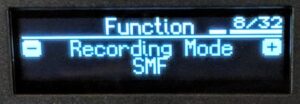 Roland pianos cannot record MP3 song files however whereas other brands can do this including Kawai digital pianos in this price range along with also being able to record and playback MIDI files and the audio wav files. All recorded and playback song files can be loaded onto a USB flash drive for storage and song retrieval for instant playback so that a person can play along with the recorded songs, which is a lot of fun to do. I appreciate the control panel round buttons that are flush with the panel and operate easily and intuitively, especially as compared to other brands.
Roland pianos cannot record MP3 song files however whereas other brands can do this including Kawai digital pianos in this price range along with also being able to record and playback MIDI files and the audio wav files. All recorded and playback song files can be loaded onto a USB flash drive for storage and song retrieval for instant playback so that a person can play along with the recorded songs, which is a lot of fun to do. I appreciate the control panel round buttons that are flush with the panel and operate easily and intuitively, especially as compared to other brands. The internal speaker system of any digital piano can really “make or break” the sound that you hear. Even though there may be a very good digital piano sound chip in the piano, if the speaker system cannot output that sound well with a good frequency range, good bass response as well as clarity, and also robust tone at lower volumes, then your piano playing experience can be noticeably lacking in that area. The HP702 has 2 smaller speakers going through 2 smaller amplifiers at 28 watts total. Although this piano can put out enough volume for an average to larger size room, the richness and fullness of the piano tone is diminished compared to the HP704.
The internal speaker system of any digital piano can really “make or break” the sound that you hear. Even though there may be a very good digital piano sound chip in the piano, if the speaker system cannot output that sound well with a good frequency range, good bass response as well as clarity, and also robust tone at lower volumes, then your piano playing experience can be noticeably lacking in that area. The HP702 has 2 smaller speakers going through 2 smaller amplifiers at 28 watts total. Although this piano can put out enough volume for an average to larger size room, the richness and fullness of the piano tone is diminished compared to the HP704.
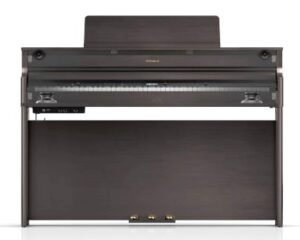 The HP704 does have a much betterinternal sound system and it’s noticeably improved from the previous HP603 model with a total of 60 watts going through 4 amplifiers and 6 speakers (5″+1″ x 2 and 2″x 2) with the 5″ + 1″configured as coaxial speakers.This much better internal speaker system will make your piano playing experience with this model much better and will sound more like a real piano in terms of volume, fullness, richness, and bass response.
The HP704 does have a much betterinternal sound system and it’s noticeably improved from the previous HP603 model with a total of 60 watts going through 4 amplifiers and 6 speakers (5″+1″ x 2 and 2″x 2) with the 5″ + 1″configured as coaxial speakers.This much better internal speaker system will make your piano playing experience with this model much better and will sound more like a real piano in terms of volume, fullness, richness, and bass response.A coaxial speaker is actually 2 speakers in one with the main speaker and then a small tweeter type speaker attached to the center of the larger speaker…it’s like 2 speakers in one and there are two of these in the HP704. But…that model is $1000 more than the HP702 so for that money it should be a noticeable upgrade. Since the piano sound chip is identical on both models then that means both models sound exactly the same through stereo headphones. So if you don’t care as much about the internal sound system and having it be bigger and fuller and you don’t feel you need the upgraded PHA50 key action in the HP704, then the HP702 with the PHA4 Standard key action may be the better option for you.
 The connectivity array that is mounted underneath the left side of the piano also has a port for a USB flashdrive for loading music song filesinto the piano or saving recorded songs that you have done on the piano. Also, if you wanted to make the HP702 piano sound bigger and fuller you could connect a set of powered monitors to the piano through the audio outputs and that would definitely help the piano, but it would cost you about $300 to $400 to do that. There are audio outputs, stereo audio input, USB/MIDI output, 2 stereo headphone jacks, etc.
The connectivity array that is mounted underneath the left side of the piano also has a port for a USB flashdrive for loading music song filesinto the piano or saving recorded songs that you have done on the piano. Also, if you wanted to make the HP702 piano sound bigger and fuller you could connect a set of powered monitors to the piano through the audio outputs and that would definitely help the piano, but it would cost you about $300 to $400 to do that. There are audio outputs, stereo audio input, USB/MIDI output, 2 stereo headphone jacks, etc. Roland also has a couple of proprietary apps for tablets called “Piano Every Day” and “Piano Designer” so that you can control a number of functions on the piano from your tablet color touch screen along with being able to add automatic one-man-band arranger styles to your piano playing experience. The piano doesn’t actually have those fun “music styles” built in to the piano…they come from the app triggered from the color touch screen. It works well and is very enjoyable and no other digital piano company offers that kind of thing under $3000.
Roland also has a couple of proprietary apps for tablets called “Piano Every Day” and “Piano Designer” so that you can control a number of functions on the piano from your tablet color touch screen along with being able to add automatic one-man-band arranger styles to your piano playing experience. The piano doesn’t actually have those fun “music styles” built in to the piano…they come from the app triggered from the color touch screen. It works well and is very enjoyable and no other digital piano company offers that kind of thing under $3000.You can isolate the right and left hands when learning the piano parts of those songs and also be able to add reprogrammed accompaniment with adds some fun orchestral background to the piano parts. The Piano Designer app lets you edit and control some of the Piano Designer functions I talked about earlier (touch, brilliance, resonance, ambience, etc), but instead of attempting to do everything though the piano user display screen and control panel buttons, you just do it through the app which is a lot more intuitive and fun to use.
 The cabinets and control panels of the HP704 and HP702 really look attractive and Roland has done a great job with its design and construction of these two models in my opinion. They look good, are well built, have very nice looking music racks and sliding key covers, and come in a variety of attractive cabinet finishes. The control panel on the pianos is also very sleek, well designed, functional, and fairly easy to access because the control panel is centered in front of you rather than off to the left side of the keyboard like many other brands do it. The user display screen has been upgraded to a bright, easy to read OLED digital screen as opposed to the previous models which used the older back-lit screens.
The cabinets and control panels of the HP704 and HP702 really look attractive and Roland has done a great job with its design and construction of these two models in my opinion. They look good, are well built, have very nice looking music racks and sliding key covers, and come in a variety of attractive cabinet finishes. The control panel on the pianos is also very sleek, well designed, functional, and fairly easy to access because the control panel is centered in front of you rather than off to the left side of the keyboard like many other brands do it. The user display screen has been upgraded to a bright, easy to read OLED digital screen as opposed to the previous models which used the older back-lit screens.
Based on my vast experience playing these kinds of digital pianos for many years along with other brands, generally speaking these pianos last for many, many years and in most cases well over 20 years, The warranty covers parts and labor for factory defects and that’s where the limitation is…it has to be a defect and not just wear & tear or problem caused by an outside source.
 Overall I think both Roland HP702 and HP704 pianos are good options to consider in the $2000 to $3000 price range because they are well built, have some compelling features, and they look good and should last a long time. They are the same in most ways as I mentioned earlier, but since the key action, internal sound system, and cabinet design and size are the big differences in the HP704, you’ll have to decide if it is worth it to you to spend more money to get the HP704. Also, the HP704 is available not only in the matte finishes but also in a polished ebony gloss black finish which adds approx $600 to the piano cost. The HP702 does not have that option.
Overall I think both Roland HP702 and HP704 pianos are good options to consider in the $2000 to $3000 price range because they are well built, have some compelling features, and they look good and should last a long time. They are the same in most ways as I mentioned earlier, but since the key action, internal sound system, and cabinet design and size are the big differences in the HP704, you’ll have to decide if it is worth it to you to spend more money to get the HP704. Also, the HP704 is available not only in the matte finishes but also in a polished ebony gloss black finish which adds approx $600 to the piano cost. The HP702 does not have that option. As far as the Physical Modeling technology goes, in my opinion Roland is heading in the right direction with that piano sound technology. There is another impressive piano sound technology in that combines the benefits of real recorded piano sampling with the benefits of Physical Modeling technology adding organic type piano sound elements that are more difficult to get with just sampling alone.
As far as the Physical Modeling technology goes, in my opinion Roland is heading in the right direction with that piano sound technology. There is another impressive piano sound technology in that combines the benefits of real recorded piano sampling with the benefits of Physical Modeling technology adding organic type piano sound elements that are more difficult to get with just sampling alone.
 The competitive models to the Roland HP702 would be the Yamaha Arius YDP184 ($2399), Yamaha CLP-725 ($1999), and Kawai CN201 ($2299). The competitors to the HP704 would be the Kawai CN301 ($2999), Yamaha CLP-735 ($2899), Kawai CA401 ($3099), and Casio AP-710 ($2799), and you could probably like any of these pianos for different reasons. However, none of those other models can play General MIDI song files. But the “sweet spot” in the entire Roland line of home furniture cabinet digital pianos is definitely the Roland HP704.
The competitive models to the Roland HP702 would be the Yamaha Arius YDP184 ($2399), Yamaha CLP-725 ($1999), and Kawai CN201 ($2299). The competitors to the HP704 would be the Kawai CN301 ($2999), Yamaha CLP-735 ($2899), Kawai CA401 ($3099), and Casio AP-710 ($2799), and you could probably like any of these pianos for different reasons. However, none of those other models can play General MIDI song files. But the “sweet spot” in the entire Roland line of home furniture cabinet digital pianos is definitely the Roland HP704.
If you want more info on new digital pianos and LOWER PRICES than internet discounts, please email me at tim@azpianowholesale.com or call direct at 602-571-1864.






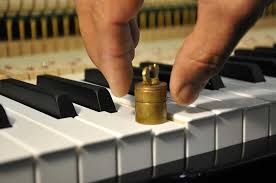

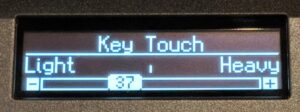














Just bought HP704 and regret it from the first sound when install it at home.
When tried it at the store, it sounded OK, but it was harder to test because it was in an open room with not much resonance.
Here are issues:
1. Mid octaves sounds very muffed and when you moved up the scales, it becomes more bright, which is not right.
2. Feels like tweeters do not work at all. Just dull sound from bottom speakers.
3. No matter how hard I hit a key, the sound is not what I would expect regarding dynamics. It sounds like hammers are very soft.
4. When setting the global volume to over 60%, there is a lot of distortion.
5. The volume between different sounds is not the same. When switching to Organ, for example, I have to set the global volume to 10% in order to match piano volume at 60%.
6. Except piano sounds, other sounds are very poor quality.
7. When switching between sounds, the prior sound cuts off immediately.
8. Tried their Android up and it is garbage. Very inconvenient. The piano technician app is crashing all the time and disconnects.
9. The modeling engine in HP704 is mediocre compared to sound samples from Kawai CA59.
10. Did not find any way to tweak piano parameters and save it as a custom piano.
11. The sound in headphones is brighter than from internal speakers. Looked in user forms and people just adjusting brightness every time they switch between speakers and headphones, which is ridiculous. My 20-year-old Kawai sounds way better.
12. Action – very noisy since you have to hit the key harder to get any decent sound out of it.
13. Dynamic range is very narrow. Looks like heavy compression.
I hope, I will be able to return it and get Kawai, which I should have done in the first place.
My HP704 on firmware 1.01 and does not look like Roland has any updates to the firmware.
How is your experience with Yamaha Clp 735/745 ?